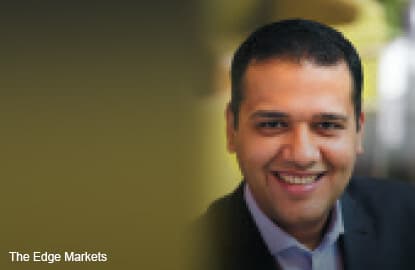
DIGITISATION has become ubiquitous in the way we communicate and work, what with the advent of cloud computing, big data, the Internet of Things and smartphones. Brick-and-mortar companies — big or small — have begun to realise that they cannot ignore this juggernaut and need to embrace the digital era.
According to Anshuman Singh, technology strategy lead for Asean at Accenture, the digitisation process adopted by mature businesses in Asean is divided into three areas: digitisation of customer experience, digitisation of operations and creating entirely new digital models.
He says the consultant company has seen a number of movements around the digitisation of customer experience and operations in mature businesses but very few are thinking of creating an entirely new digital model.
“There is still inertia in re-imaging current businesses beyond channels and operational digitisation. The biggest growth I see is in financial services, consumer goods and, increasingly, government,” Anshuman tells The Edge.
He also notes that investment in digital infrastructure varies from country to country, each taking its own path.
“Some [countries] like Singapore are investing in resilient infrastructure and so, services such as in-country cloud-based business models dominate. Others like Thailand are investing in country-wide payment infrastructure and so, services that cater for banking for the poor will see greater take-up.
“But in many other regions, for example Laos and Cambodia, the quality and width of network coverage is limited. Therefore, their investment is focused on providing basic digital infrastructure,” Anshuman says.
He also highlights the multiple challenges faced by clients during their digital transformation with the biggest being mindset change and availability of talent.
“Any change is hard and long-entrenched ways of working, ways of doing business and the comfort of the status quo are highly limiting for our clients. We spend a lot of time educating boards and CxOs (a term commonly used when referring to the various chief officers) on digital disruption to ensure their awareness is high and they see value in the opportunities presented by it.
“Secondly, talent is a key gap — we need to be educating our people, right from universities, on the skills required to reap the benefits of digital disruption. For others who have been in the workforce longer, unlearning and relearning digital skills is key,” Anshuman says.
He believes strategy and innovation remain relevant to the era of digital disruption but says the horizon and detail of the strategy have changed.
“All innovation has to be ultimately linked to a business outcome — be it greater customer acquisition, lowering cost or even a completely disruptive business model to take on the competitors of their business.
“What has changed though is the horizon and detail of your strategy. The horizons are shorter and details are lighter. All successful organisations need a compass but they don’t need endless details in strategy,” Anshuman explains.
In many instances, he adds, organisations are crafting strategies to cater for digital disruption — whether as a defender, such as Procter & Gamble’s launch of connected home offerings to ward off online retailers, and/or an attacker, like Singapore’s DBS Bank launching digibank in India, the country’s first mobile-only bank.
Anshuman will be elaborating on the topic in a panel discussion entitled “Is strategy & innovation still relevant in an era of digital disruption?” at the “What’s Next” conference to be held on July 28 at the Sime Darby Convention Centre, Kuala Lumpur. Themed “The Business Impact of Disruptive Technology”, the conference is being organised by technology news portal Digital News Asia (DNA) with The Edge Communications Sdn Bhd as the media partner.
DNA founder and CEO Karamjit Singh says the second edition of the conference aims to bring together the management of brick-and-mortar companies and digital transformation enablers to discuss the latest trends and help traditional businesses adapt to the new reality.
“They say there are two certainties in life — death and taxes. To add to that is digital, that is, everything that can go digital will go digital in business,” he says.
As consumers go digital, brick-and-mortar companies need to do so as well to stay ahead of the pack, he adds.
Berjaya Group founder Tan Sri Vincent Tan will be the keynote speaker at the conference while Dr Mubbashir Iftikhar, head of digital transformation at KPJ Healthcare Bhd, will share his work experience at the healthcare service provider.
“The beauty of it [the conference] is that you are not coming to listen to Oracle, Microsoft or SAP to talk about how great their technology is but to brick-and-mortar CEOs [sharing their experiences and insights into digital transformation]. To hear Tan speak at the conference would be amazing — the business tycoon’s combined companies, private and listed, generate a yearly revenue of RM24 billion,” remarks Karamjit.
He opines that executives responsible for corporate strategy and innovation and digital transformation should attend the conference to better understand the trend and challenges ahead.
Save by subscribing to us for your print and/or digital copy.
P/S: The Edge is also available on Apple's AppStore and Androids' Google Play.